Related Research Articles

The Christian Church (Disciples of Christ) is a mainline Protestant Christian denomination in the United States and Canada. The denomination started with the Restoration Movement during the Second Great Awakening, first existing during the 19th century as a loose association of churches working towards Christian unity, then slowly forming quasi-denominational structures through missionary societies, regional associations, and an international convention. In 1968, the Disciples of Christ officially adopted a denominational structure at which time a group of churches left to remain nondenominational.

Ecumenism – also called interdenominationalism, or ecumenicalism – is the concept and principle that Christians who belong to different Christian denominations should work together to develop closer relationships among their churches and promote Christian unity. The adjective ecumenical is thus applied to any non-denominational initiative that encourages greater cooperation and union among Christian denominations and churches.

The Restoration Movement is a Christian movement that began on the United States frontier during the Second Great Awakening (1790–1840) of the early 19th century. The pioneers of this movement were seeking to reform the church from within and sought "the unification of all Christians in a single body patterned after the church of the New Testament."
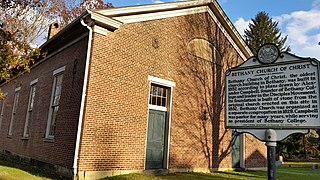
The Churches of Christ, also commonly known as the Church of Christ, is a loose association of autonomous Christian congregations located around the world. Typically, their distinguishing beliefs are that of the necessity of baptism for salvation and the prohibition of musical instruments in worship. Many such congregations identify themselves as being nondenominational. The Churches of Christ arose in the United States from the Restoration Movement of 19th-century Christians who declared independence from denominations and traditional creeds. They sought "the unification of all Christians in a single body patterned after the original church described in the New Testament."
Church of Christ may refer to:
The group of churches known as the Christian Churches and Churches of Christ is a fellowship of congregations within the Restoration Movement that have no formal denominational affiliation with other congregations, but still share many characteristics of belief and worship. Churches in this tradition are strongly congregationalist and have no formal denominational ties, and thus there is no proper name that is agreed upon and applied to the movement as a whole. Most congregations in this tradition include the words "Christian Church" or "Church of Christ" in their congregational name. Due to the lack of formal organization between congregations, there is a lack of official statistical data, but the 2016 Directory of the Ministry documents some 5000 congregations in the US and Canada; some estimate the number to be over 6,000 since this directory is unofficial. By 1988, the movement had 1,071,616 members in the United States.
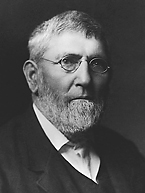
David Lipscomb was a minister, editor, and educator in the American Restoration Movement and one of the leaders of that movement, which, by 1906, had formalized a division into the Church of Christ and the Christian Church. James A. Harding and David Lipscomb founded the Nashville Bible School, now known as Lipscomb University in honor of the latter.

The Congregational Christian Churches was a Protestant Christian denomination that operated in the U.S. from 1931 through 1957. On the latter date, most of its churches joined the Evangelical and Reformed Church in a merger to become the United Church of Christ. Others created the National Association of Congregational Christian Churches or joined the Conservative Congregational Christian Conference that formed earlier in 1945. During the forementioned period, its churches were organized nationally into a General Council, with parallel state conferences, sectional associations, and missionary instrumentalities. Congregations, however, retained their local autonomy and these groups were legally separate from the congregations.
The Churches of Christ in Australia is a Reformed Restorationist denomination. It is affiliated with the Disciples Ecumenical Consultative Council and the World Communion of Reformed Churches.
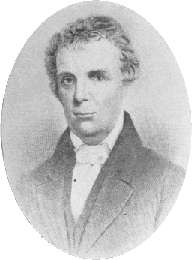
Barton Warren Stone was an American evangelist during the early 19th-century Second Great Awakening in the United States. First ordained a Presbyterian minister, he and four other ministers of the Washington Presbytery resigned after arguments about doctrine and enforcement of policy by the Kentucky Synod. This was in 1803, after Stone had helped lead the mammoth Cane Ridge Revival, a several-day communion season attended by nearly 20,000 persons.

The World Methodist Council (WMC), founded in 1881, is a consultative body and association of churches in the Methodist tradition. It comprises 80 member denominations in 138 countries which together represent an estimated 80 million people; this includes approximately 60 million committed members and a further 20 million adherents. But there is also another, contradictory, number of members of the member churches on the WMC's website: about 40 million. It is the fifth-largest Christian communion after the Roman Catholic Church, Eastern Orthodox Church, Anglican Communion, and World Communion of Reformed Churches.
Jesse Moren Bader (1886–1963) was a 20th-century evangelist and ecumenist. He was an evangelical leader who played a role in the establishment of the World Convention of Churches of Christ.
Will Davis Campbell was a Baptist minister, lecturer, and activist. He was a Southern white supporter of African-American civil rights. Campbell was also a lecturer and author, most notably for his autobiographical work Brother to a Dragonfly, a finalist for the National Book Award in 1978.
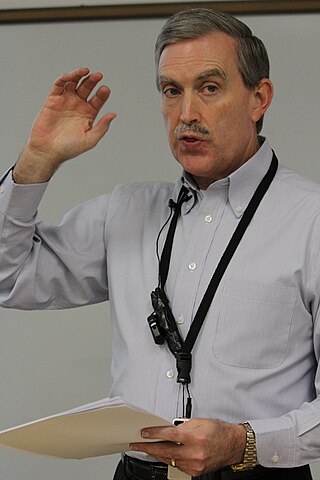
Douglas A. Foster is an American author and scholar known for his work on the history of Stone-Campbell Restoration Movement.
The Lausanne Committee for World Evangelization, more commonly known as the Lausanne Movement, is a global movement that mobilizes Christian leaders to collaborate for world evangelization. The movement's fourfold vision is to see 'the gospel for every person, disciple-making churches for every people and place, Christ-like leaders for every church and sector, and kingdom impact in every sphere of society'.

The United Church of Christ in the Philippines is a Christian denomination in the Philippines. Established in its present form in Malate, Manila, it resulted from the merger of the Evangelical Church of the Philippines, the Philippine Methodist Church, the Disciples of Christ, the United Evangelical Church and several independent congregations.
World Communion Sunday is a celebration observed by several Christian denominations, taking place on the first Sunday of every October, that promotes Christian unity and ecumenical cooperation. It focuses on an observance of the eucharist. The tradition was begun in 1933 by Hugh Thomson Kerr who ministered in the Shadyside Presbyterian Church. According to Presbyterian Outlook:
Davitt S. Bell recalled that Dr. Kerr first conceived the notion of World Communion Sunday during his year as moderator of the General Assembly (1930). Dr. Kerr's younger son, the Rev. Dr. Donald Craig Kerr, who is pastor emeritus of the Roland Park Presbyterian Church in Baltimore, was sixteen in 1933. He has related that World Communion Sunday grew out of the Division of Stewardship at Shadyside. It was their attempt to bring churches together in a service of Christian unity—in which everyone might receive both inspiration and information, and above all, to know how important the Church of Jesus Christ is, and how each congregation is interconnected one with another.
William Robinson (1886–1963) was a British theologian within the Stone-Campbell movement.
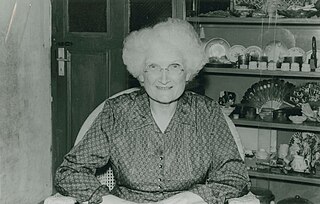
Elizabeth Bernard was an American missionary for the Churches of Christ, known for her missionary work with blind children in Asia.
References
- ↑ Gary Holloway, A Global Fellowship:A Concise History of the World Convention of Churches of Christ, Nashville: World Convention, 2018, page 133,
- ↑ "Change to Global Gathering". Churches of Christ in Australia. March 19, 2018. Retrieved May 25, 2018.
- ↑ "World Convention Profile Table" . Retrieved September 17, 2012.
- ↑ The Stone-Campbell Movement: The Story of the American Restoration Movement by Leroy Garrett p. 528
- ↑ Holloway, Clinton J. (2008). "Together in Christ: A History of the World Convention of Churches of Christ" (PDF). World Convention of Churches of Christ. Retrieved May 25, 2018.
- ↑ "World Convention". World Convention. Archived from the original on December 17, 2016.
{{cite web}}: CS1 maint: unfit URL (link) - ↑ "The History of NCU" (PDF). Northwest Christian University. p. 3. Retrieved September 17, 2012.
- ↑ "Global Women Connecting". Global Women Connecting. Retrieved May 25, 2018.